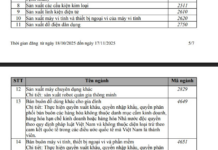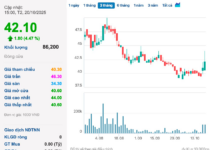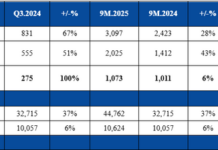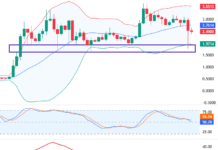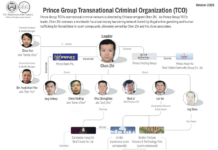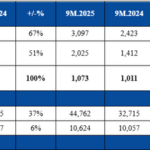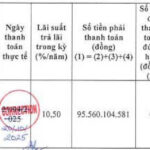This type of grain is rice. According to AFP, fears of a super earthquake and a series of typhoons, coupled with a week-long national holiday, caused a rush on rice purchases in Japan. This staple food is considered essential in this country.
On August 27, the Japanese government issued a warning about the panic buying of rice in the country.
Tetsushi Sakamoto, Japan’s Minister of Agriculture, Forestry and Fisheries, urged people to buy only the necessary amount of rice and emphasized that “the shortage of supply will gradually be resolved.”
An employee at a branch of the famous Fresco supermarket chain in Tokyo said: “We could only buy half the usual amount of rice, and the bags of rice were quickly sold out. Even though customers lined up before the supermarket opened, the bags of rice, each containing 10 kg, were always sold out in the morning.”
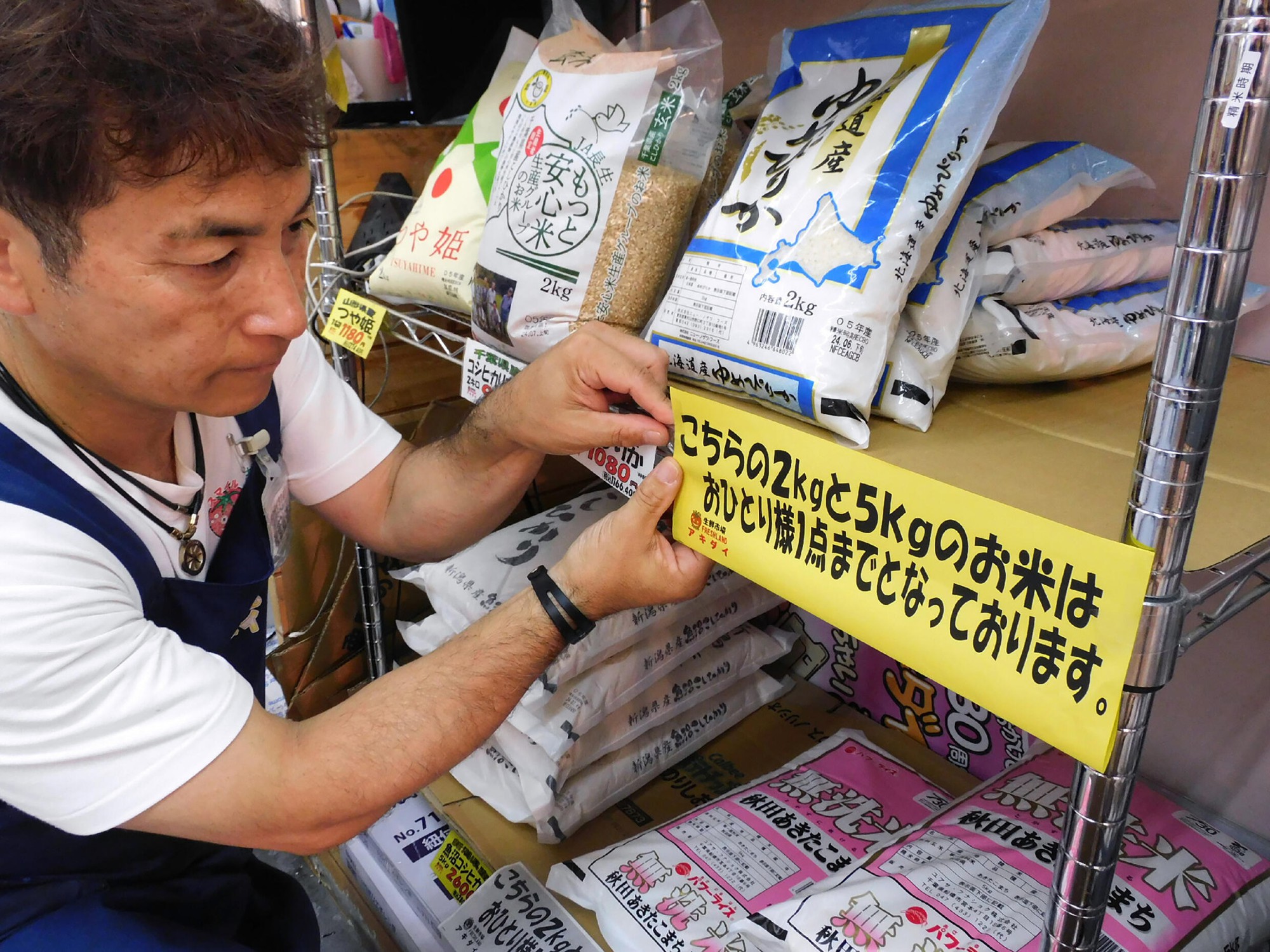
A supermarket employee in Tokyo puts up a sign telling customers that they are limited to buying one bag of rice. Photo: AFP
Similarly, after the government’s warning earlier this month about the possibility of a super earthquake, multiple typhoons, and the annual Obon holiday (although this warning has been lifted), rice shelves in some stores were also empty or other items were limited. Notably, some food stores in Tokyo even posted signs recommending that each household buy only one bag of rice per day to ensure that everyone has access to this staple.
In addition to the above factors, the reason for the rice shortage in Japan is the lower rice production due to hot and dry weather. Moreover, the increase in foreign tourists visiting Japan has also contributed to the higher demand for rice.
Rice has long been an integral part of Japanese culture. With an annual consumption of 7 million tons, rice is the most consumed food in the “Land of the Rising Sun.” Nowadays, the demand for rice has decreased somewhat due to the declining population and changing dietary habits of many Japanese people who are opting for alternative products.
The rice shortage is expected to ease in September when the new rice harvest begins to reach consumers, and it should end completely in October and November.
Japan Has No Plans to Release Rice Reserves

A supermarket in Tokyo with empty rice shelves and a sign informing customers that they can only buy one bag of rice at a time. Photo: AFP
At present, the Japanese government has stated that it “has no plans to release rice reserves” as this could affect the balance of supply and demand as well as prices in the commercial market. Since Japan has not released its strategic rice reserves since 1995, the current rice shortage is not considered to have affected the country’s food security.
The Ministry of Agriculture, Forestry and Fisheries of Japan is currently using market measures to address the short-term rice shortage. First, they are increasing rice imports from abroad, with a focus on rice from Vietnam and Thailand. Second, they are promoting the cultivation of high-yield and heat-tolerant rice varieties. Third, they are working to increase rice prices and prevent speculation. Fourth, they are mobilizing private reserves.
In the long term, Japan continues to initiate the reclamation of land from farmers who cannot produce rice due to aging, turning it into large-scale rice production companies or fields. In addition, the country is also promoting the application of advanced science and technology while addressing the issue of labor shortages in agriculture.
High Rice Prices Put Vietnam in the Top 3 Rice Exporters Worldwide

Vietnamese rice is becoming increasingly expensive and is favored by many markets. Illustration
Vietnamese rice is now highly valued in the global market due to its consistently improved quality. According to statistics from the General Department of Customs, as of mid-August 2024, Vietnam exported 5.7 million tons of rice, earning nearly USD 3.59 billion, a slight increase of 6.5% in volume and a significant increase of 24.7% in value compared to the same period last year. The Vietnamese rice industry has set a target of reaching USD 5 billion in exports this year due to higher prices and increased demand from many markets worldwide.
The industry aims to export this “grain of gem” from Vietnam to reach a target of USD 5 billion in exports this year, not only because of the high prices but also because many markets are increasing their purchase quantities.
In an interview with Tien Phong, Minister of Agriculture and Rural Development Le Minh Hoan stated that Vietnamese rice is not only sold to poor countries but has also made its way into premium markets such as Japan, South Korea, the US, and Europe. Bags of rice with the Vietnam Rice brand are proudly displayed on the shelves of large supermarkets worldwide. Vietnamese rice has been recognized as one of the best rice varieties globally, featured in the menus of dignitaries and chosen by renowned chefs.
Previously, in 2023, Vietnam exported approximately 8 million tons of rice, with a turnover of USD 4.6 billion. This was a record since 1989. The price of Vietnamese rice reached a peak of USD 663 per ton, the highest among the top rice-exporting countries.
References: AFP, The Straits Times, Customs
Vietnam’s $4.6 billion ‘Treasure’ triumphs, neighboring countries receive bad news
Vietnam’s “treasure” continues to maintain its top position in the world. Meanwhile, neighboring countries are eagerly awaiting more positive signals.
The challenging future of the rice market
An expert panel from India has recently predicted that the global rice shortage will worsen as India’s high-quality rice exports face new barriers due to skyrocketing transportation costs amidst the Hamas-Israel conflict and domestic rice shortages affecting the export of other rice varieties.












